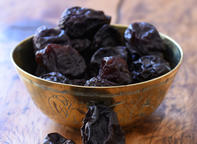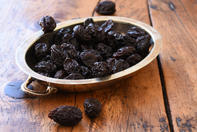Product Overview
Prunes, Prunus domestica, are different varieties of the European Plum. Prunes generally refers to the dried plums or the plum varieties that are suitable for drying.

The plum varieties used for drying bear smaller fruit that are easier to dry. Prunes are produced worldwide from over 100 different varieties. Full economic yields are normally reached by year 5 from planting. It is important to control production as allowing these trees to bear too much fruit one year will lead to lower production the following season.
Preparation or Handling
The prunes are picked at optimum ripeness for drying, which is when they reach between 3 and 4-pounds pressure. The sugar is then at its best before the fruit gets overripe and fruit drop starts to occur.
This is tricky to get the fruit all harvested at the optimum stage. If good crop control has been practised, then the fruit should be of good size and uniform ripening should occur. It is imperative to have enough harvesting capacity, whether mechanical or manual. It is also imperative that there is enough drying capacity close to the production area.
Global Production
The biggest producer of prunes has been the USA, with most of the prunes produced in California, although the USA production has fallen in the past few years.
Other countries that produce sizable prune crops are Chile, producing around 100 000 tonnes of dry prunes, France and Argentina. South Africa is a much smaller producer.
South African Production

Most of the South African prunes are produced in the Western Cape. South African production has shrunk, by two thirds, over the past forty years, with less than 1000 tonnes per annum, of dried prunes being produced in the past few years.
There is, however, renewed interest to grow this industry, to exploit the newly emerging African markets.
Uses
Prunes are used in numerous dishes to sweeten the flavour. They are a good source of Vitamin K and are also used as a mild laxative for constipation, because of the presence of dietary fibre and Sorbitol.
For bulk or Prunes export enquiries please use the enquiry link below.